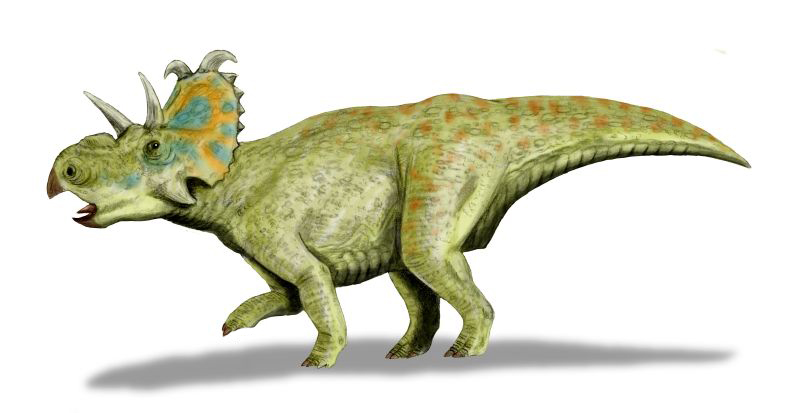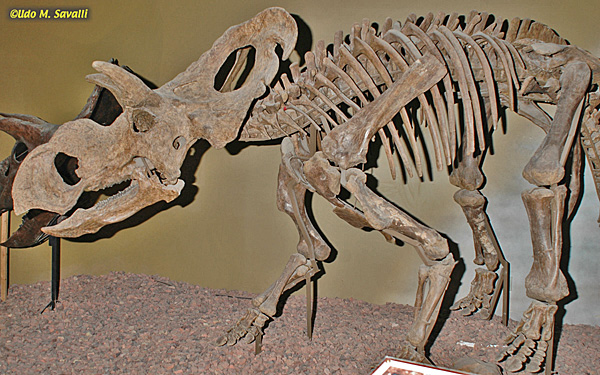[Recent Entries][Archive][Friends][User Info]
April 15th, 2015
| April 15th, 2015 | |
|---|---|
| 08:13 pm [industrialterro] [Link] |
Albalophosaurus Альбалофозавр (Albalophosaurus) — род птицетазовых динозавров подотряда цераподов, живших в раннем меловом периоде (около 145—140 миллионов лет назад), на территории нынешней Азии. Окаменелости теропода были найдены в геологической формации Kuwajima Formation в Японии. Впервые описан палеонтологами Ohashi и Barrett в 2009 году. Представлен одним видом — A. yamaguchiorum. В результате кладистического анализа было установлено, что Albalophosaurus относится к группе Cerapoda. Другие характеристики, такие как морфология зубов Albalophosaurus предполагают отнесение данного рода к Ornithopoda. Учитывая много недостающей информации исследователи ограничились размещением данного таксона Cerapoda указав его как incertae sedis. Albalophosaurus (meaning 'white crest lizard') is a genus of ceratopsian ornithischian dinosaur. It was described in 2009 from remains found in 1997 by Yoshinori Kobayashi from the Kuwajima Formation of central Japan, outcropping in Hakusan in the Ishikawa Prefecture. The holotype, SBEI 176, consists of cranial bones from an incomplete, disarticulated skull and left lower jaw thought to belong to a single individual. The type species is named A. yamaguchiorum. The generic name is derived from Latin albus, "white", and Greek λόϕος (lophos), "crest", a reference to the snow-covered crest of Mount Hakusan. The specific name honours Ichio Yamaguchi en Mikiko Yamaguchi, who discovered and prepared many fossils from the site. The exact age of the strata from which the remains of Albalophosaurus have been found is not known because of the lack of marine beds containing index fossils, but the Kuwajima Formation is known to have formed during the Early Cretaceous, most likely after the Berriasian and before the Barremian based on the ages of underlying and overlying formations. More recent studies suggest that the age of the Kuwajima Formation is most likely Valanginian—Hauterivian, although the exact age is still uncertain. Although Albalophosaurus was classified as a basal ceratopsian in a phylogenetic analysis conducted along with the description of the genus, only one ambiguous synapomorphy of the clade is present in the holotype, and none of the unambiguous synapomorphies that define Ceratopsia are present. Other characteristics, such as those of the dental morphology of Albalophosaurus, seem to suggest that the genus shares a relation to Ornithopoda. Thus the authors of the original description of the genus refer it to Cerapoda incertae sedis, and do not consider it to be a ceratopsian. Han et al., 2012 found Albalophosaurus to be a ceratopsian more derived than Micropachycephalosaurus, Yinlong, Stenopelix, and Chaoyangosaurus, but basal to a clade composed of Psittacosaurus and more derived ceratopsians. Tags: Вымершие рептилии, Мел, авеметатарзалии, архозавроморфы, архозавры, диапсиды, динозавроморфы, динозавры, маргиноцефалии, неорнитискии, птицетазовые, цераподы, цератопсы |
| Time | Event |
| 08:56 pm [industrialterro] [Link] |
Albertaceratops Альбертацератопс (Albertaceratops; букв. «рогатая морда из Альберты») — род птицетазовых динозавров из семейства цератопсид, живших в раннем меловом периоде (около 83,5—70,6 миллионов лет назад) на территории нынешней Северной Америки. Окаменелости динозавра были найдены на территории провинции Альберта (Канада) и штата Монтана (США). Впервые описан палеонтологом Ryan в 2007 году. Всего известно два скелета Albertaceratops. Представлен одним видом — Albertaceratops nesmoi. Albertaceratops (meaning "Alberta horned face") was a genus of centrosaurine horned dinosaur from the middle Campanian-age Upper Cretaceous Oldman Formation of Alberta, Canada. Albertaceratops is known from a single complete skull (TMP.2001.26.1) found in August 2001 and skull and postcranial fragments. This genus is unusual in combining long brow horns with an otherwise centrosaurine skull, as centrosaurines normally possess short brow horns. Over its nose was a bony ridge, and on its frill were two large outwardly-projecting hooks. A phylogenetic analysis carried out by its describer, Michael J. Ryan, found it to be the most basal centrosaurine. Additional specimens were reported from a bonebed in the Judith River Formation of Montana, which is equivalent to the Oldman Formation and differentiated only by the United States/Canadian border. However, further study showed these remains to come from a chasmosaurine, Medusaceratops. Both ceratopsids lived during the same time period, about 77.5 million years ago. The specific name, A. nesmoi, is derived from the name of Cecil Nesmo, a rancher living in Manyberries, Alberta, a town of less than 100 people located 71 km south of Medicine Hat. The rancher was thus honored in recognition of his efforts to aid fossil hunters. Репродукции (1, 2, 3, 4, 5, 6): Размеры тела в сравнении с человеком: Tags: Вымершие рептилии, Мел, авеметатарзалии, архозавроморфы, архозавры, диапсиды, динозавроморвф, динозавры, маргиноцефалии, неорнитискии, птицетазовые, центрозаврины, цераподы, цератопсиды, цератопсы |
| Previous Day | 2015/04/15 [Archive] |
Next Day |











